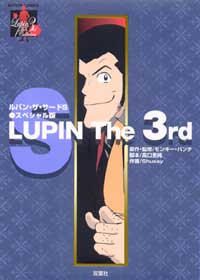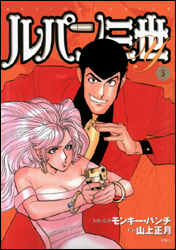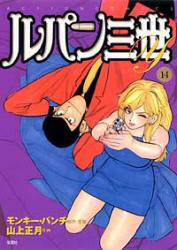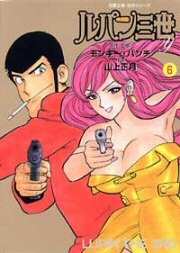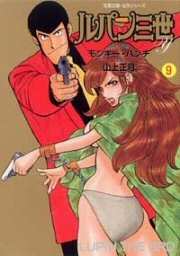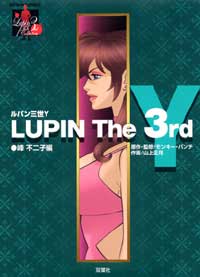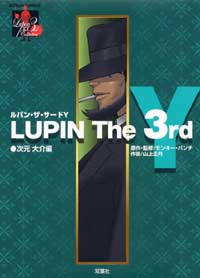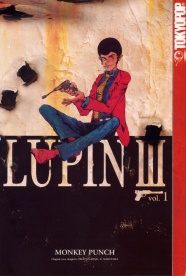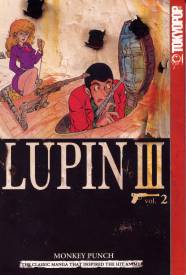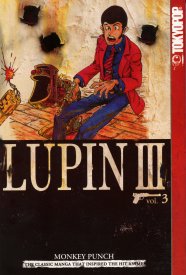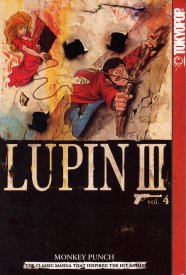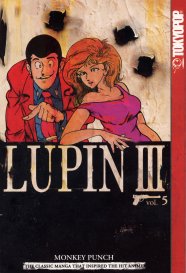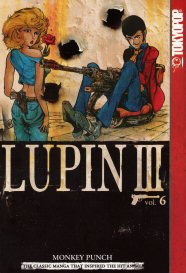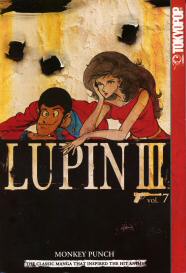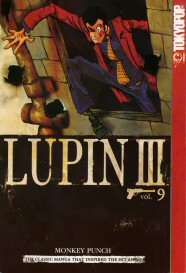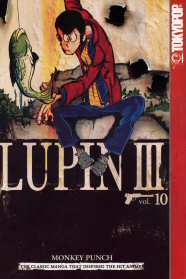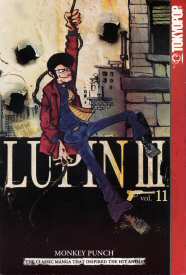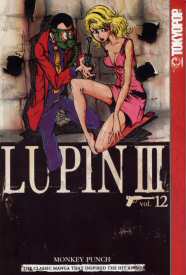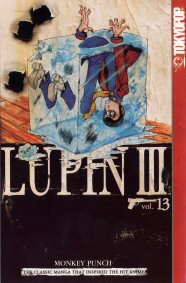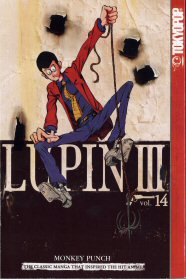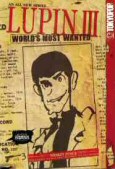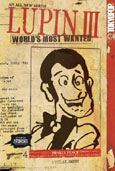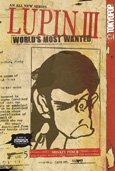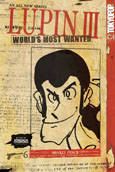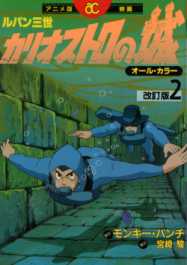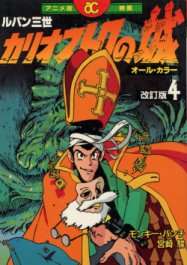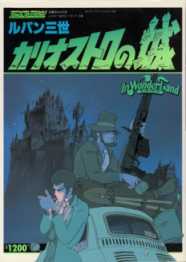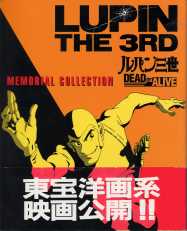
Kazuhiko Kato started his publishing career in 1965 with Playboy School (プレーボーイ入門) under the pen name Gamuta Eiji (がむた永二) and was currently writing Pinky Punky (ピンキィ パンキィ), when he was approached to do a three month project for a new magazine called Weekly Manga Action. The editor suggested Kazuhiko use the pen name "Monkey Punch"; Kazuhiko reluctantly agreed to use it for a year. The three month project and one year pseudonym started on 1967 August 10 and turned into a franchise that has spanned decades and a name that is still recognized in the anime and manga community.
The inspiration for the series came from Maurice Leblanc's series of Arsène Lupin: Gentleman Thief novels and short stories. No treasure was safe once Arsène Lupin sent warning to his upcoming victim. Monkey Punch made Lupin's grandson, Arsène Lupin III, the protagonist of his series and eventually created the supporting characters that would be the core of the series to this day. Monkey Punch took his inspiration for the art style from Mad Magazine, particularly Mort Drucker and Sergio Aragonés.
Where Leblanc's Lupin was a gallant gentleman thief, Monkey Punch's Lupin III was a lascivious, self absorbed lout. He spends most of his time trying to bed every woman he comes across, willing or not. However, his efforts usually resulted in cartoon-ish physical repercussions.
The initial run of the manga ended on 1969 May 22 with ninety-four chapters penned. It would soon return two years later to Weekly Manga Action and end again on 1972 April 27 adding another thirty-six chapters to the series. But this was actually just the beginning...

Five years after Monkey Punch bid the gang farewell, he again returned to Weekly Manga Action with a series titled Shin Lupin III (New Lupin III). This series ran from 1977 June 23 to 1981 May 28 adding another 188 chapters to Lupin's legacy. Many of the stories in this run would be adapted into episodes for the second TV series.
It would take sixteen years before Lupin would grace the world of manga. Starting on 1997 January 01, Monkey Punch supervised five stories by writer Takaguchi Satosumi and illustrator Shusay. Rather than retain Monkey Punch's distinctive art style, this manga resembled the animated depictions of the gang.
Monkey Punch finally took hold of the reins again, and started writing new stories for Weekly Manga Action on 1999 May 27. The "Y" for this series stands for the illustrator Monkey Punch tapped to do the art, Yamakami Masatsuki. The series was published until 2004 August 28 resulting in another eighty chapters of adventure for the gang. When the series resumed in the summer of 2009, it found a new publication home in the pages of Lupin III Official Magazine. Reaching back to its roots, the series retitled itself Shin Lupin III Y.

Monkey Punch teamed up with illustrator Miyama Yukio (the "M" in the title if you prefer) to produce a fifth manga series. The series began in 2004 in the pages of Lupin III Official Magazine. It would churn out another thirty-six chapters before going on hiatus until 2009. When it returned, it was surprisingly not under a name that started with "Shin" – Lupin III M Neo.

No, it's not the sort of "H" typically associated with manga... Monkey Punch partnered with illustrator Hayakawa Naoya in the summer 2009 issue of Lupin III Official Magazine for the sixth manga entry. Currently, there are three volumes published that collect the current run of this incarnation.
While Italy and other nations had translations of the original two manga series, the US would not receive its own translation until TokyoPop began publishing the first series on 2002 December 02. They would release the entire series in fourteen volumes with the last being released on 2004 July 06. Each volume retailed for $9.99 and was sized 5 x 7.5 inches.
TokyoPop began their release of the second series, titled Lupin III - World's Most Wanted, on 2004 September 07. Sadly, the run was cancelled due to poor sales and TokyoPop's own decline as a company. Volume nine was the last one published on 2007 July 10. It is unlikely any one will pick up and finish the run here in the US. Each volume retailed for $9.99 and was sized 5 x 7.5 inches.
The franchise has also had many other supplementary works created, typically in the form of Mooks and Roman Albums. Mooks are "movie books" encapsulating a summary of a film in storyboard fashion along with interviews, production notes, and other materials about the film. Roman Albums derive their name from the Japanese using the word "roman" for "romance". Despite the name difference, these rarely contain any content different than what is found in a Mook.
Various manga adaptations have been made of the TV series, specials, and films, Cagliostro being a particular favorite with numerous releases. The most recent anime adapatation was for the Lupin vs Conan film.



